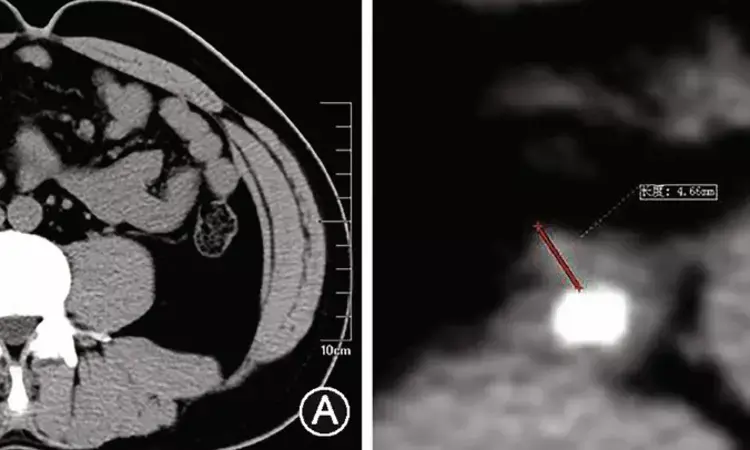- Home
- Medical news & Guidelines
- Anesthesiology
- Cardiology and CTVS
- Critical Care
- Dentistry
- Dermatology
- Diabetes and Endocrinology
- ENT
- Gastroenterology
- Medicine
- Nephrology
- Neurology
- Obstretics-Gynaecology
- Oncology
- Ophthalmology
- Orthopaedics
- Pediatrics-Neonatology
- Psychiatry
- Pulmonology
- Radiology
- Surgery
- Urology
- Laboratory Medicine
- Diet
- Nursing
- Paramedical
- Physiotherapy
- Health news
- Fact Check
- Bone Health Fact Check
- Brain Health Fact Check
- Cancer Related Fact Check
- Child Care Fact Check
- Dental and oral health fact check
- Diabetes and metabolic health fact check
- Diet and Nutrition Fact Check
- Eye and ENT Care Fact Check
- Fitness fact check
- Gut health fact check
- Heart health fact check
- Kidney health fact check
- Medical education fact check
- Men's health fact check
- Respiratory fact check
- Skin and hair care fact check
- Vaccine and Immunization fact check
- Women's health fact check
- AYUSH
- State News
- Andaman and Nicobar Islands
- Andhra Pradesh
- Arunachal Pradesh
- Assam
- Bihar
- Chandigarh
- Chattisgarh
- Dadra and Nagar Haveli
- Daman and Diu
- Delhi
- Goa
- Gujarat
- Haryana
- Himachal Pradesh
- Jammu & Kashmir
- Jharkhand
- Karnataka
- Kerala
- Ladakh
- Lakshadweep
- Madhya Pradesh
- Maharashtra
- Manipur
- Meghalaya
- Mizoram
- Nagaland
- Odisha
- Puducherry
- Punjab
- Rajasthan
- Sikkim
- Tamil Nadu
- Telangana
- Tripura
- Uttar Pradesh
- Uttrakhand
- West Bengal
- Medical Education
- Industry
Hydronephrosis area useful predictor of impacted ureteral stones, finds study

Hydronephrosis area useful predictor of impacted ureteral stones, finds study published in the BMC Urology.
Ureteroscopic lithotripsy for impacted stones is challenging, but it is important to predict impacted stones preoperatively. Hydronephrosis, which is evaluated by a grading system, is often apparent in impacted stones. However, the currently used grading system is a qualitative evaluation. We, therefore, focused on a quantitative evaluation: the area of hydronephrosis. The aim of this study was to investigate whether the area of hydronephrosis could predict impacted stones more accurately than Society for Fetal Urology grade. We retrospectively identified 160 patients who underwent ureteroscopic lithotripsy for ureteral stones at our hospital between January 2014 and April 2022. Impacted stones were defined as stones fixed to the ureteral wall that could not be moved by means of ureteroscopic manipulation or water pressure. Of the 160 patients, 54 (33.8%) had impacted stones.
Comparing patient characteristics, there were significant differences in stone size, ureteral wall thickness, Society for Fetal Urology grade, renal pelvic width and area of hydronephrosis (all P < 0.01). Receiver operating characteristic analysis showed that area of hydronephrosis was the more significant predictive value (area under the curve 0.781) compared with Society for Fetal Urology grade (area under the curve 0.676, P < 0.01). Multivariate analysis revealed that significant independent predictive factors of impacted stones were thicker ureteral wall thickness and larger area of hydronephrosis (both P < 0.01). The area of hydronephrosis and ureteral wall thickness were significant predictors of impacted stones in patients undergoing ureteroscopic lithotripsy for ureteral stones. These factors may be useful for selecting the treatment and preoperative settings.
Reference:
Iwahashi Y, Kohjimoto Y, Deguchi R, Wakamiya T, Yamashita S, Hara I. Area of hydronephrosis is a useful predictive factor of impacted ureteral stones. Urolithiasis. 2024 Apr 2;52(1):56. doi: 10.1007/s00240-023-01526-3. PMID: 38564028; PMCID: PMC10987368.
Dr. Shravani Dali has completed her BDS from Pravara institute of medical sciences, loni. Following which she extensively worked in the healthcare sector for 2+ years. She has been actively involved in writing blogs in field of health and wellness. Currently she is pursuing her Masters of public health-health administration from Tata institute of social sciences. She can be contacted at editorial@medicaldialogues.in.
Dr Kamal Kant Kohli-MBBS, DTCD- a chest specialist with more than 30 years of practice and a flair for writing clinical articles, Dr Kamal Kant Kohli joined Medical Dialogues as a Chief Editor of Medical News. Besides writing articles, as an editor, he proofreads and verifies all the medical content published on Medical Dialogues including those coming from journals, studies,medical conferences,guidelines etc. Email: drkohli@medicaldialogues.in. Contact no. 011-43720751


